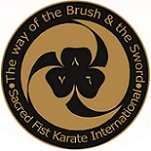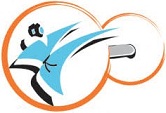|
Pencak silat also spelled
penchak silat or pentjak silat . The head organisation of pencak silat in
Indonesia is Persilat.Pencak silat was chosen in 1948 as a unifying term for
the Indonesian fighting styles. It was a compound of the two most commonly
used words for martial arts in Indonesia. Pencak was the term used in
central and east Java, while silat was used in Sumatra. In modern usage,
pencak and silat are seen as being two aspects of the same practice. Pencak
is the performance aspects of the martial art, while silat is the essence of
the fighting and self-defense. |
 |
|
Weapons Used
Kris: A dagger, often with a
wavy blade made by folding different types of metal together and then
washing it in acid.
Kujang: Sunda blade
Sarong/Samping: Piece of silk fabric worn around the waist or shoulder, used
in locking techniques and for defense against blades.
Batang/Galah: Rod or staff made from wood, steel or bamboo.
Tongkat/Toya: Walking-stick carried by the elderly and travellers.
Kayu: A wooden stick of any size.
Kipas: Traditional folding fan preferably made of hardwood or iron.
Karambit/Kuku Machan: A blade shaped like a tiger's claw that women could
tie in their hair.
Sabit/Clurit: A sickle, commonly used in farming, cultivation and harvesting
of crops.
Sundang/Pisau: Sword/ knife, either double or single-edged.
Badik: Bugis or Makasar blade
Tumbuk Lada: Slightly curved Minang dagger, literally meaning "pepper
crusher".
Gedak: Mace/ club often associated with Hanuman.
Seligi: Sharpened bamboo shaft used as a javelin or spear.
Tombak/Lembing: Spear/ javelin made of bamboo, steel or wood that sometimes
has horsehair attached near the blade.
Parang/Golok: Machete/ broadsword, commonly used in daily tasks such as
cutting through forest brush.
Trisula/Serampang: A trident originally used for fishing.
Chabang/Cabang: Short-handled trident, literally meaning "branch". |













